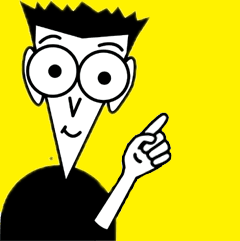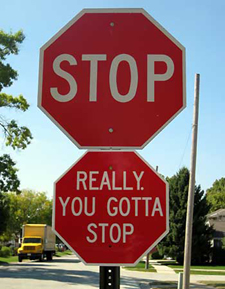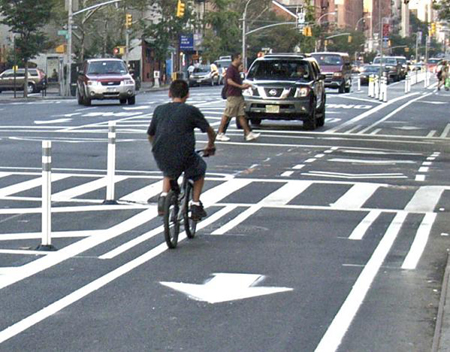Driving Around Cyclists for Dummies
 Thu, July 28, 2011
Thu, July 28, 2011  I got an email from a regular reader, Keay Edwards; he said,
I got an email from a regular reader, Keay Edwards; he said,
“I thought you might be interested in AAA's stance on California's proposed law requiring a three foot passing distance of cyclists by motor vehicles.
I was surprised to discover that my auto insurance company was lobbying against the proposed law and asked them why."
Here is their response:
Thank you for your comments relative to AAA's position on SB 910.
Our official position is not a straight oppose, it is an 'oppose unless amended'. We don't take issue with the 3 foot distance rule when it can be safely accomplished. The problem is how to address situations when a 3 foot distance cannot be maintained or met.
Current language in the bill would require the vehicle to slow to 15 mph of the speed of the bicycle to pass. But this is problematic for several reasons, as pointed out in the bill analysis. Law enforcement has issues with this approach as well because it can cause a drastic decrease in speed differentials between the vehicle passing the bicycle and other vehicles on the road depending on the posted speed limit.
Not only can this cause rear-end collisions, it can create a more dangerous situation for the cyclists. It is the differences in speed that is the number one cause of car crashes. Another suggested approach is to require the car to enter into the opposite lane of traffic (cross a double line) in order to give the cyclists the 3 foot distance. This is something being explored as well as a number of other ideas.
While we can all agree on the concept and goal SB 910, crafting workable legislation usually requires addressing a number of details and issues that arise throughout the process as the concept is flushed out and enforceability is addressed.
The author of the bill, Senator Lowenthal, is committed to working with all interested parties, including law enforcement, AAA and the bicycle coalition sponsors of the bill to find the most appropriate and safest way to address situations, when the general rule to allow a 3 foot distance cannot be met due to road design. We have to determine what the law should be in those circumstances and there is some disagreement on that level.
Thank you again for allowing us to explain our position on the bill.
Best Regards,
Crista B. (AAA Northern California, Nevada and Utah.)
Thank you Keay for forwarding this; here is my take:
Why all the fuss over an issue that should be common sense. Would you pass any vehicle giving less than 3 foot of space? You would give a stray dog at least 3 feet when passing.
Let’s say there is a large object, a refrigerator for example, lying at the side of the road protruding 3 feet into your lane. Would you continue driving at 55 or 60mph and miss it by less than three feet?
Most sensible people would slow, and if they couldn’t go into the opposing lane, they would squeeze by carefully at a slow speed. The 3 foot passing law is calling for what people should do anyway if they were using common sense.
Let me offer another simple scenario: You are driving on any two lane highway or street; a vehicle is waiting to make a left turn. (Right turn in the UK.) The driver cannot make the turn because there is opposing traffic; he stops and waits with his turn signal on.
Other traffic stops and stacks up behind, waiting for the driver to make his turn. There is no danger, no one runs into the rear of anyone; eventually there is a break in opposing traffic, the vehicle makes its turn and everyone goes on their merry way.
And yet to read Crista B’s explanation above, a vehicle slowing because it is not safe to pass a cyclist presents a danger to other road users. I would suggest if a vehicle runs into the rear of another, they were driving too fast for the road conditions, or they were following too close. This is driving 101.
Maybe I should write a “Driving around cyclists for Dummies” book. In it I would say, “If you see a cyclists ahead give him/her plenty of room as you pass. If you can’t go into the opposing lane because there are cars coming the other way, slow down and wait for a break in opposing traffic.”
You only need a small break because a cyclist is about 7 foot long and 3 foot wide, usually traveling at 15 to 20mph; it is not like trying to pass an 18 wheel semi. And you don’t have to go completely over to the opposite lane but at least straddle the center line.
If I am that cyclist quite honestly I have no objections if you squeeze by with less than 3 feet, as long as you do so carefully at slow speed. If you bump me at 5mph over the speed I am doing it would probably not be too serious; but clip me at 55 or 60 and it might be fatal.
This 3 foot passing law is getting way too complicated for the average person to understand. Crista B for the AAA asks:
When the general rule to allow a 3 foot distance cannot be met due to road design. We have to determine what the law should be in those circumstances.
This situation is no different than a stop sign where cross traffic doesn’t stop. You stop, and then proceed when it is safe to do so. Legislators are not asked, “What do I do when it is not safe to proceed?” The answer is simple; you wait until it is safe. Give a cyclist 3 feet; if you can’t do that safely, then wait until you can.
No need to change the wording; if you slow down and pass a cyclist carefully no one is going to take a yard stick and argue over the exact 3 feet.
Imagine the cyclist is a refrigerator or some other large object in the road. Just slow down and go around while being careful not to bump into it.



























Losing momentum: An excuse not to stop, not a reason
That makes me both sad and extremely angry.
This unfortunate lady’s death was totally unnecessary; it was rush hour, she was crossing in a crosswalk with a green light, and now she is dead because a cyclist decided not to stop but to push through the crowd of pedestrians.
This not stopping by cyclists has to stop; it is total bullshit. It is a stupid habit many bike riders have, and there is no logical reason for it.
I am not being critical of the cyclist who rolls S-L-O-W-L-Y through a deserted intersection on a residential street. I am talking of the failure to yield to pedestrians, or to other vehicles that arrived first at busy stop signs and red lights.
If anyone wants to argue that in both instances cyclists are breaking the law I will have to plead no contest. However, the big difference is that the latter is rude and anti-social; it pisses people off, and in this case someone has died because of it.
Forget that 811 pedestrians were hit by cars in San Francisco last year, while only 18 were hit by a bicycle; that is not the point. Unless a pedestrian steps directly into the path of a speeding cyclist, no one should get killed or seriously injured by a bicycle.
The reason; they will lose their precious momentum. Are they that fucking lazy that they can’t slow or stop and make the effort start again?
All it takes is get out of the saddle give a few hard pumps on the pedals and you are back up to speed again. The ones with the potential to do serious damage are the ones who have reached a level of fitness that stopping and starting again should not even be an issue.
I witness this bullshit behavior almost on a daily basis; riding on a local bike path. I see cyclists buzz past pedestrians without warning or any attempt to slow down; in many cases there are small children around who are totally unpredictable and extremely vulnerable.
There are a couple of places where the path crosses a street and you can hear cars approaching and if they are close you can even see them. Why anyone would ride a bicycle from a bike path onto a road with a car approacing is beyond my comprehension.
Yet I see cyclists not even attempt to stop but rather make a hard left, ride towards the oncoming traffic, forcing the car to swerve towards the center of the road. They then continue riding until the road is clear and do a U-turn to double back to the path.
If a car approaches in the far lane from the opposite direction, they pull the same maneuver and make a hard left into the near lane without stopping. In most cases the car will stop because the driver has no idea what this idiot is about to do. The cyclist then turns in front of the car without so much a hand signal, or thank you wave.
All this just to avoid losing that little bit of precious momentum. All types of cyclists, across the board; even people on cruiser bikes, wearing street clothes and no helmet, and not traveling at any great speed. But already they have learned that momentum must be maintained at all costs. It is a habit these cyclists have formed; probably at the same time they first learned to ride a bike.
It is a habit born out of laziness; what other reason can there be. Like all habits it can be broken, but only if there is a willingness to change on the of part the individual. If a person is riding a bike to stay in shape, stopping and starting again is increasing your rate of effort; it is a form of interval training.
If nothing else by stopping when a cyclist is supposed to stop takes away the biggest complaint both motorists and pedestrians have against us all. Yes, all of us; I'm sure I get less respect on the road because of the poor habits of others. As I have said before; stop handing them the stick to beat us with.
Slowing down or stopping when it is called for, and the resulting loss of momentum is not your enemy, it is a ticket to increased strength and fitness and greater respect from others with whom we are obliged to share the road